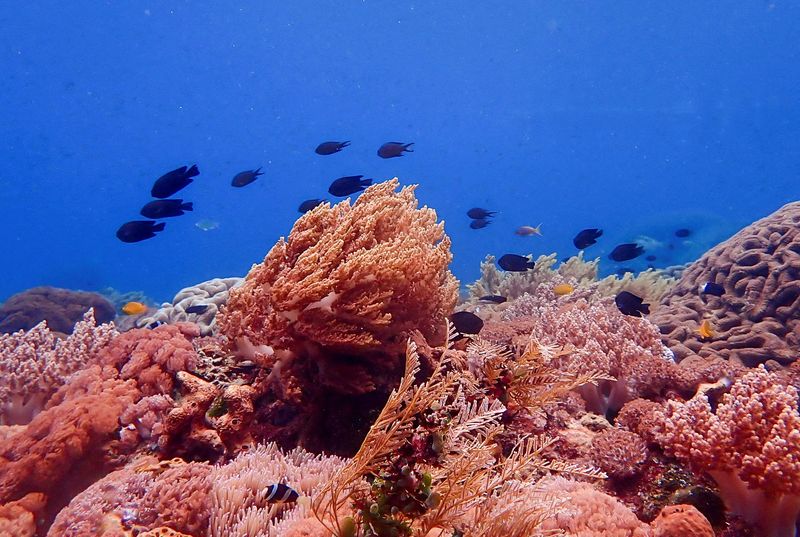Coral insurance in the USA
2022.11.21 13:18
[ad_1]

Coral insurance in the USA
Budrigannews.com – Speed boats and a global army of snorkelers and divers are part of the conservation group The Nature Conservancy’s vision for the future of coral protection during hurricanes and tropical storms that damage reefs.
The first U.S. coral insurance contract was purchased on Monday by the global “Reef Brigades” plan on behalf of the state of Hawaii. The insurance policy will provide funds for repair work, building on similar Caribbean policies.
The senior risk and resilience program manager at The Nature Conservancy (TNC), Eric Roberts, stated, “To date, conservation has really relied on philanthropy and government grants.”We are also utilizing the private sector for this work by using insurance.”
Aside from being a valuable nursery for fish, coral reefs that periphery created shorelines can restrict flooding by giving a boundary against sea storm floods, meaning safety net providers have each interest in safeguarding them.
Roberts stated, “Usually that’s enough to make a business case to say, yes, we need to protect these reefs even with just the flood risk reduction value.”
When new corals grown in a nursery are required, the Reef Brigades recover reef fragments, store them in ocean or shore-based nurseries, and then re-attach them using cement or epoxy when it is safe. This process can cost anywhere from $10,000 per hectare to $1.5 million per hectare.
For the $110,000 premium in the contract that was announced on Monday, Hawaii will receive insurance protection for up to $2 million for its coral reefs until the end of December 2023.
The approach covers most of Hawaii, from the Huge Island to Kauai, and starts paying out at 50 bunches of wind.
Up to the policy’s limit, higher wind speeds result in higher payouts as a percentage of the policy’s value.The payouts are supposed to be available for work on restoration seven days after a storm.A damage assessment is not required with this kind of policy, which is known as a “parametric” policy.
MEXICAN PRECEDENT The Mexican state of Quintana Roo put the idea of insuring reefs through its paces three years ago.
Local tourism businesses and the government purchased an insurance policy to cover their portion of the Mesoamerican Reef, which is located just offshore from some of the most well-known Mayan ruins in the country.
Later, the environmental group the MAR Fund issued a policy regarding the remainder of the Mesoamerican Reef, which included Mexico, Belize, Guatemala, and Honduras.
One storm in Mexico in 2020 and another in Belize in November were covered by the policies.In July, Quintana Roo renewed its policy for 307,850 Mexican pesos.
Secretary of Ecology and Environment Josefina Huguette Hernández Gómez stated, “Yes, it can be a lot of money, but it was worth it.”
She stated, “The cost is higher than what you pay in insurance when you have the loss of biodiversity or corals.”
NASDAQ: Willis Towers Watson,which worked on the Hawaii policy and the MAR Fund policy said it is working on a coral reef policy for Fiji as well as policies to prevent coral reef bleaching, runoff from excessive rainfall, and lost fishing days from storms caused by climate change.
It is abundantly clear that the work must be implemented globally.
A 2020 feasibility study by The Nature Conservancy on reef insurance came to the conclusion that “for reefs to survive beyond the end of this century,” “an unprecedented coordinated global effort among public, private, and philanthropic sectors will be required.”
The U.N. climate talks that came to an end over the weekend in Egypt were criticized for not making enough of a connection between protecting biodiversity and reducing overall environmental damage.
The agreement on a “loss and damage” fund to assist poor nations in coping with climate disasters was its most significant accomplishment.
According to Mexican diplomat Patricia Espinosa, who was the former head of the United Nations Framework Convention on Climate Change, reef insurance was in line with the discussions about loss and damage that took place at COP27 and should be further investigated.
She stated, “The reality today is that the largest portion of the losses that we see as a result of these very radical and very severe climatic phenomena are not insured.” These climatic phenomena are extremely severe.
($1 = 20.0340 Mexican pesos)








